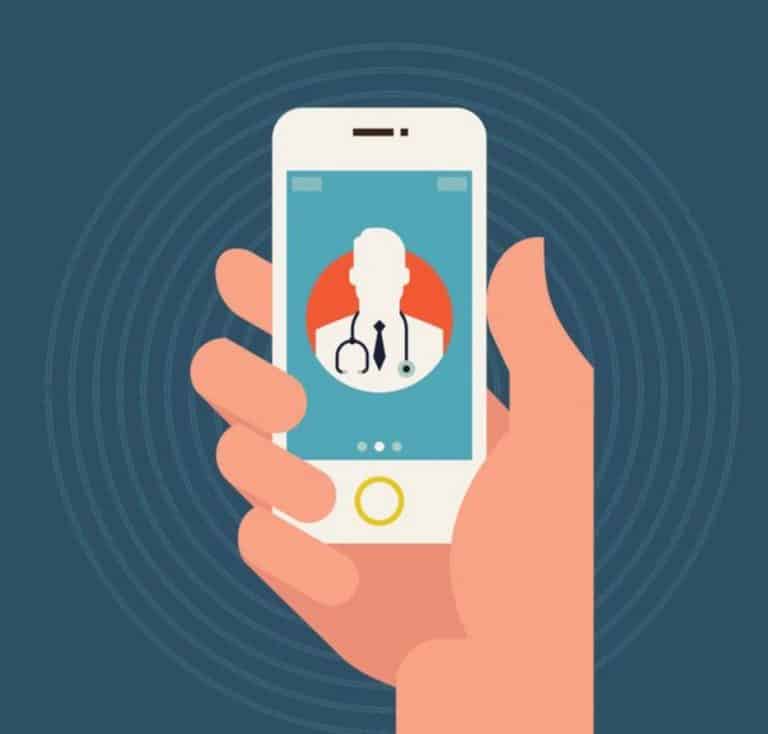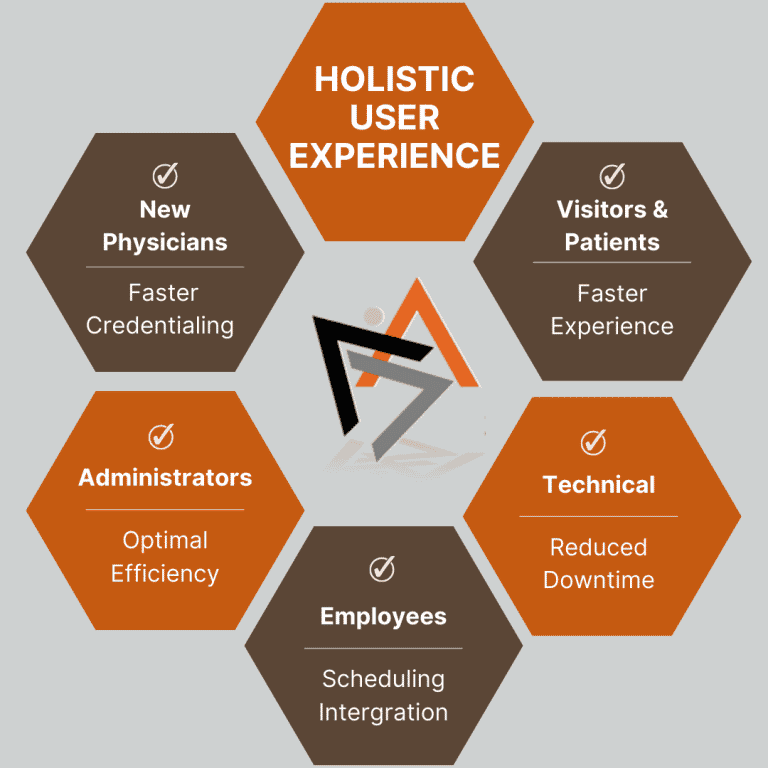3 Key Areas That Can Improve Holistic Healthcare Credentialing

How holistic credential management can enhance the healthcare user experience
Traditional identity and access management at hospitals and healthcare facilities result in gaps that affect physicians, training management and application access, and visitor and patient access.
In this article, we will delve into the challenges in these three areas and present best practice solutions to mitigate the issues.
- Lengthy Onboarding
- Impacted Patient Care
- Negative Guest Experience
- Affected RVUs and Billing
Visitor and Patient Access
The challenges we see with visitor and patient access are:
- Current processes at most hospitals are manual
- Minimal or no integration with any hospital applications
- Manual look ups for visitor verification and patient visit validation take time, creating an inefficient or long process
The Bottom Line
Pilot trials have shown up to 2 minutes of total process time from arriving at the desk to being guided to their destination.
Value Proposition
Visitor and patient credentialing issues can be mitigated by:
- Adding informed intelligence into the purpose of the visit using a workflow visitor process
- Integration with electronic health records and vendor management systems to considerably speed up the process
- Relying on bulk registrations to speed up regular patients and visitors by adding pre-verified workflows to their check-in process
- Integrating with wayfinding apps to reduce staff time to provide needed assistance
It Makes a Difference
Pilot trials have shown reduction of total process time to 67 seconds when integrated solutions were used.
This holistic user experience results in significant benefits to the hospital:
- Faster experience for visitors and patients upon arrival
- Less repetition for repeat visitors and patients
- Higher awareness for administrators and visitors for movement within the hospital

Training Management and Application
The challenges we see with training management and applications in hospitals and healthcare facilities are:
- The prerequisite training process is typically manual, with several siloed systems
- Current physician training management timelines can impact access to applications in a timely manner, creating delays in the physician getting started
- Only roles and responsibilities for physical access are defined
The Bottom Line
Integration with logical access can significantly expedite processes for physician access to critical applications, getting them properly trained and credentialed quicker.
Training management and application results in significant benefits by:
- Start with the outcome of the project
- Using integration principles to help assign and track training status and update credential privileges as steps are completed
- Assigning the right levels of access through downstream integration into access control
- Automating and tracking annual and periodic operational and application trainings so physician access isn’t disabled or violated
- Scheduling integration with physical access
It Makes a Difference
The use of integration will significantly cut down the current process, which is frustrating for physicians and hospital administrators.
This holistic user experience results in significant benefits:
- Informed training exercises reducing application downtime
- Less overhead on repetitive training and credentialing efforts
- More efficient and optimal use of resources

Physician Credentialing
The challenges we see that impact physician with respect to proper credentialling are:
- The process is lengthy, manual, and error-prone, frequently relying on faxes and emails
- Data sources are disparate and overlapping, with multiple credentialing committees
- Physician onboarding using current practice models typically requires 3+months
The Bottom Line
The overall process is cumbersome and can delay physicians getting onboarded, strain the credentialing system, and create an overall negative experience for all parties.
Physician credentialing issues can be significantly improved by:
- Integrating with the various data sources to reduce significant time in obtaining physician information and optimize a committee’s role for verification and approvals
- Building a single source access portal to maintain integrity of process, documentation, and information exchange
- Using an audit trail to track any missed steps and provide progress to all parties
- Documenting exceptions so proper audit controls are in place and visible to all parties
It Makes a Difference
The use of integration will significantly cut down the current months-long process that is frustrating for physicians and hospital administrators.
This holistic user experience results in significant benefits:
- Faster credentialing and onboarding
- Informed progress regarding onboarding
- Reduction of time and effort for physicians and administrators
- Quicker hiring of physicians to facilitate patient care
- Lesser overhead for onboarding and credentialing
- More efficient and optimal use of resources
Key Takeaways
Our value proposition in healthcare security best practices revolves around employing a holistic focus on the user experience and change management support across the entire platform.

By addressing the gaps that affect physicians, training management and application access, and visitor and patient access, the overall experience is optimal, secure, and beneficial to all parties.
About Atriade
Atriade is a security consulting firm. We provide security system design services for access control, perimeter protection, video and visitor management, and other physical security technologies. We also provide security master planning, program development, risk assessments, professional services, and project management.
Our client portfolio includes Fortune 50 companies, Ivy League universities, and leading technology firms in Silicon Valley.
Visit us online at Atriade.com
Connect with us on LinkedIn
Subscribe to our LinkedIn Newsletter: Take A Risk
- Categories:
- Blog,
- Risk Management
